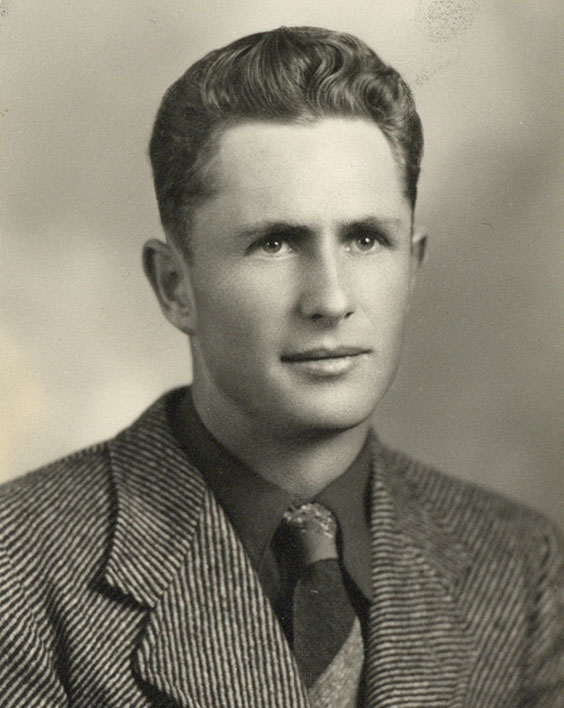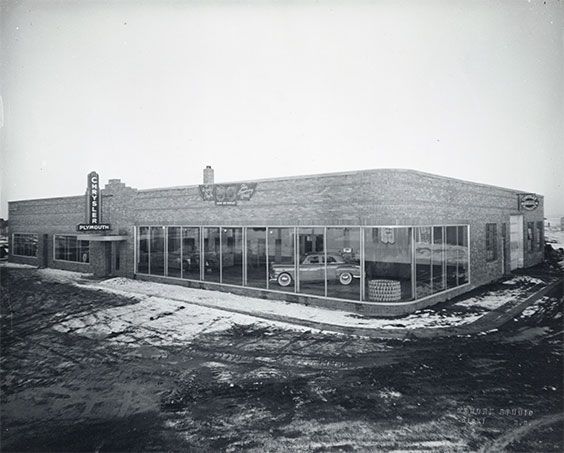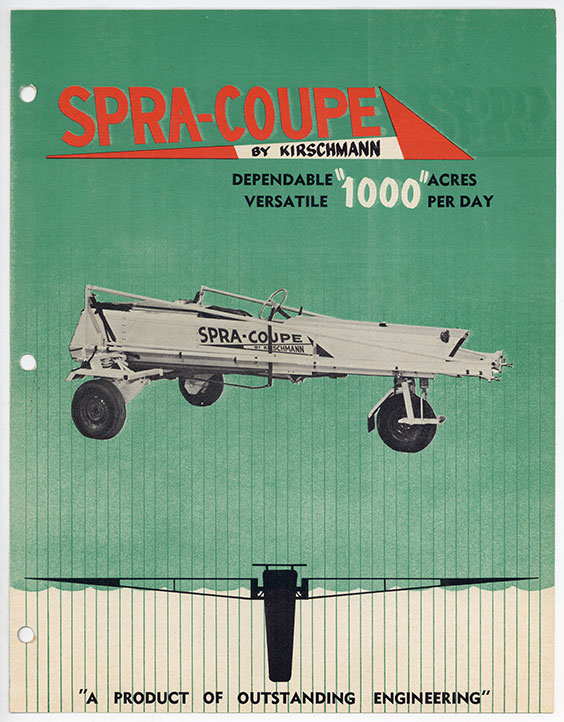From First Draft to Polished Publication: The Life Cycle of "North Dakota History" Articles
Government-funded marionette theater. An iconic photograph of Sitting Bull. Fargo’s bootlegging underworld. The first World War I monument in the nation.
What do these have in common? They are all are captured in riveting detail in North Dakota History: Journal of the Northern Plains, published for more than a century by the State Historical Society of North Dakota. “What?” you think to yourself. “The State Historical Society has a legit academic journal?” Yes indeed, covering a wealth of northern plains history since 1906. I wrote about surveying our journal audience last year, but to better explain what distinguishes the journal from a general interest magazine, I want to walk you through the publication process — from selecting manuscripts and photos to the polished, printed glossy that arrives in your mailbox (or can, if you sign up!).
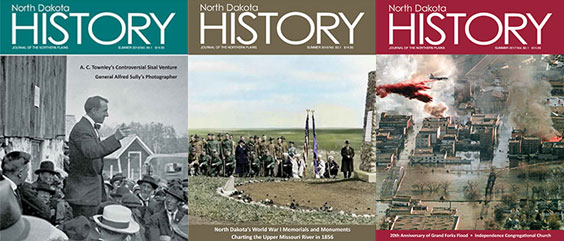
1. Manuscript selection
As an academic journal, we have an open call for manuscript submissions, and our staff selects promising ones for anonymous peer review. This means the journal editor, Pam Berreth Smokey, finds subject-area experts to review the text and offer feedback on whether the article meets our guidelines — including source citations — and on potential improvements. The reviewers don’t know the author’s name, and the author never learns the reviewers’ names. Reviewers could be from North Dakota or any state (it’s a secret!). We look at their areas of expertise to select the best match for the topic.
2. Revision process
If the article is accepted by reviewers, the author revises according to reviewer feedback, as well as feedback from Pam, me (the associate editor), and other knowledgeable staff. We edit all manuscripts using the Chicago Manual of Style (including source citations) and maintain a style guide for local North Dakota terms as well.
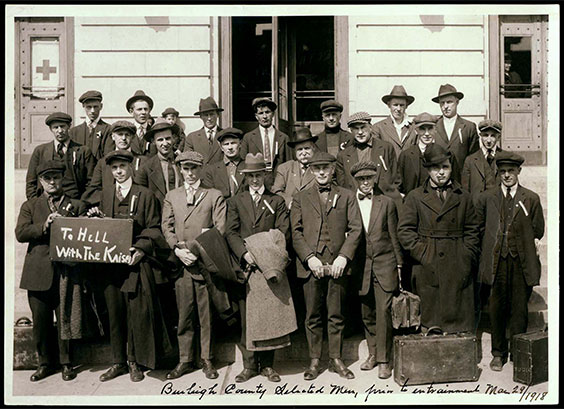
Burleigh County men prior to entrainment during World War I, March 29, 1918. Look at their faces, their style, their ages. Do you think the Kaiser got the message? SHSND SA E0071-00001
3. Photo selection
We ask the author for image suggestions to accompany the article, since photos, illustrations, and newspaper scans add visual interest and can tell a story all their own. Our photo archivist, Sharon Silengo, also digs through the State Archives to find related images in our collection. When we need to look further afield, I request photo files and reprint permission from other archives and libraries across the country. We ask authors to draft image captions, often supplemented by the stellar research Sharon unearths.
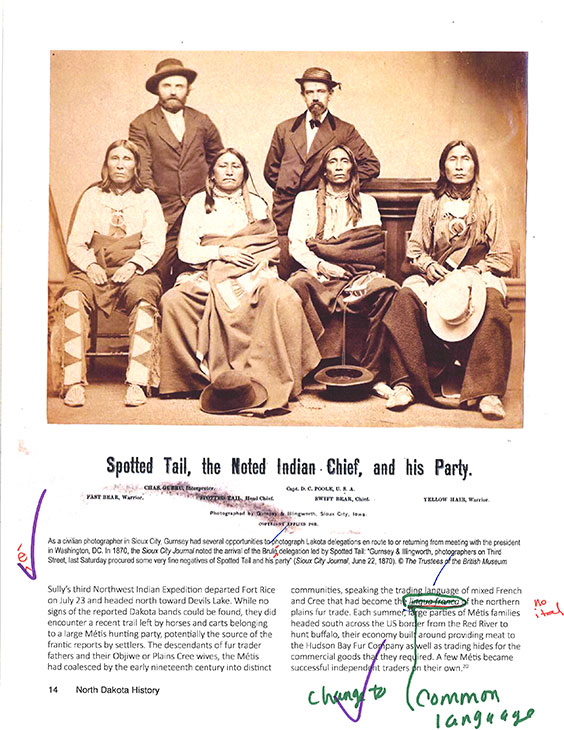
4. Layout and proofing
The journal’s text and images are sent to a design contractor, who uses a template created by our internal new media specialists. In addition to the main feature articles, we compile book reviews (also written by academics) and short features written by State Historical Society staff that highlight objects from our collections. The design and proofing phase often goes through many (many, many) rounds, including author review and input from our division director and State Historical Society director.
5. Printing, reading, and acclaim
When the proof receives unanimous approval, Pam sends it to the printer! She and I check press proofs one more time before nervously signing off and collapsing into our piles of revisions and notes. We try our best to eliminate any errors to maintain a standard as close to perfect as humanly possible. Not to mention being attractive and highly readable — as testified to by winning the Mountain Plains Museums Association design award two years in a row.
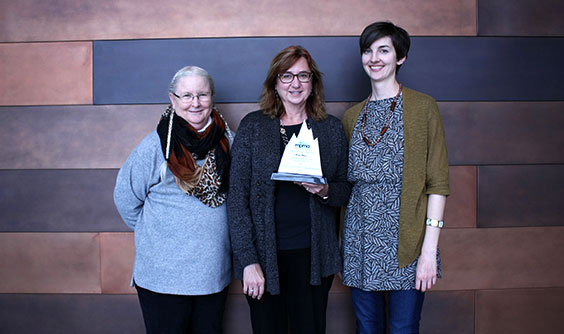
Photo archivist Sharon Silengo, North Dakota History editor Pam Berreth Smokey, and Ann with the 2017 MPMA Publication Design Award.
Luckily for you, the most recent issue of the journal is available now, and you can read featured articles online. If you are a researcher and writer of North Dakota history, consider submitting your original work. And for everyone who loves to learn about this region and its complex history — peruse our archives! We are looking forward to the next 100+ years.


